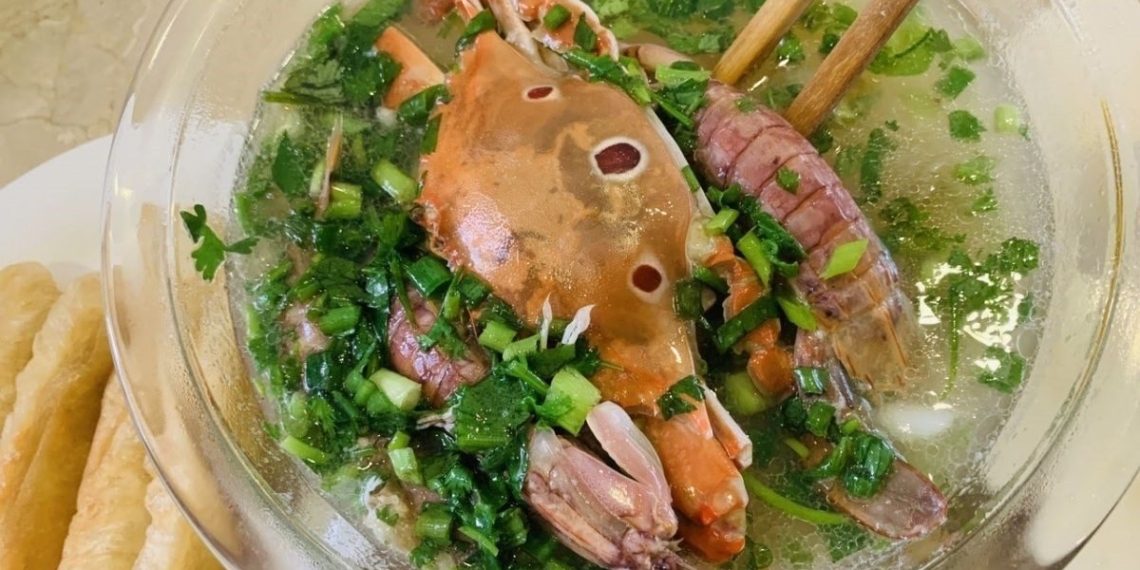Seafood bánh canh is a soupy dish typical of Phu Yen cuisine, with a delicious and memorable flavor that is hard to forget once you have tasted it. Let’s join TasteVN in the kitchen to discover 2 extremely simple ways to make seafood bánh canh right at home!
1. Seafood bánh canh (recipe shared by a user)
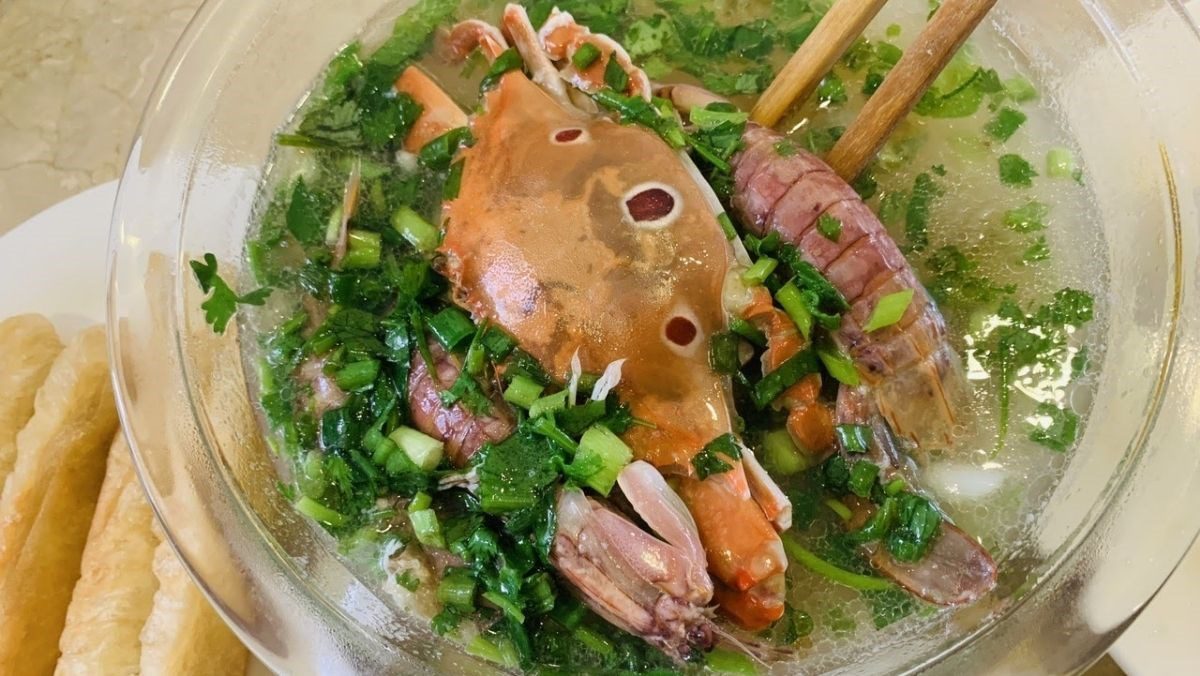
-
Preparation
20 minutes
-
Cooking
50 minutes
-
Difficulty
Easy
Ingredients for Seafood bánh canh (recipe shared by a user) Serves 4 people
Bánh canh noodles 200 gr Shrimp 300 gr Crab 300 gr Corn 1 ear Green onions/Cilantro A little Shallots A little Fried dough sticks A little Cooking oil 1/2 cup Fish sauce 1 teaspoon Common spices A little (salt/MSG/seasoning powder)
How to choose fresh ingredients
How to choose quality mantis shrimp
- Mantis shrimp are only delicious when alive, with firm meat, still active, and the legs and head firmly attached to the body. It’s best to choose mantis shrimp with thin and bright shells, feeling heavy in hand.
- When choosing shrimp, opt for those that are fully grown, approximately the length of your forearm. The meat of these shrimp is guaranteed to be sweet, chewy, and fragrant.
- Do not buy dead shrimp, those with a foul smell, or slimy texture. Avoid purchasing shrimp on full moon days as mantis shrimp are very prone to being bruised or spoiled on these days.
How to choose fresh, firm crabs
- You should buy crabs at the beginning of the month (from the 1st to the 5th) or at the end of the month (from the 28th to the 30th) of the lunar calendar. This is when the crab meat is the fattest and firmest.
- In fact, not all large crabs have a lot of meat; the best quality crabs are of moderate size, just right for your hands, with plenty of firm and sweet meat.
- When holding the crab, turn it upside down and press on the crab’s chest (not on the belly). If the chest sinks in, it is not a good crab. Conversely, if it stays firm, it indicates a fresh, firm crab, about 95% quality.
- Do not buy crabs around the middle of the lunar month, as they are molting at this time, resulting in bland and less meat, mushy and soft, which won’t taste good.
Suggestions for where to buy ready-made bánh canh noodles
- You can find ready-made bánh canh noodles at local markets, supermarkets, grocery stores near your home, or on e-commerce websites.
- When purchasing, be sure to check the production date and ensure that the green noodles are not moldy! Only buy bánh canh with intact and dry packaging.
- Additionally, you can make bánh canh noodles at home with a simple recipe from TasteVN to ensure safety and quality for your dish.

How to prepare Seafood Bánh canh (recipe shared by users)
-
Prepare the ingredients
Remove the husk from the sweet corn, wash it thoroughly, and then cut it into 4 – 5 pieces.
Next, blanch the bánh canh noodles in boiling water for about 5 minutes to soften and separate them, then remove and drain.
Remove the roots and wilted leaves from the scallions and cilantro, then wash and chop them finely. Clean the shallots and crush them.
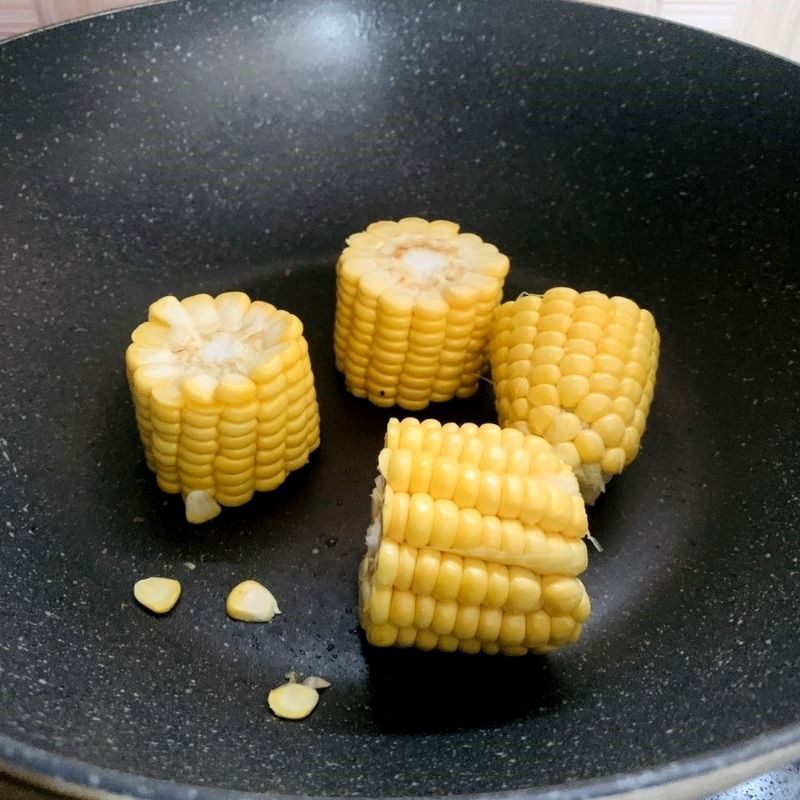

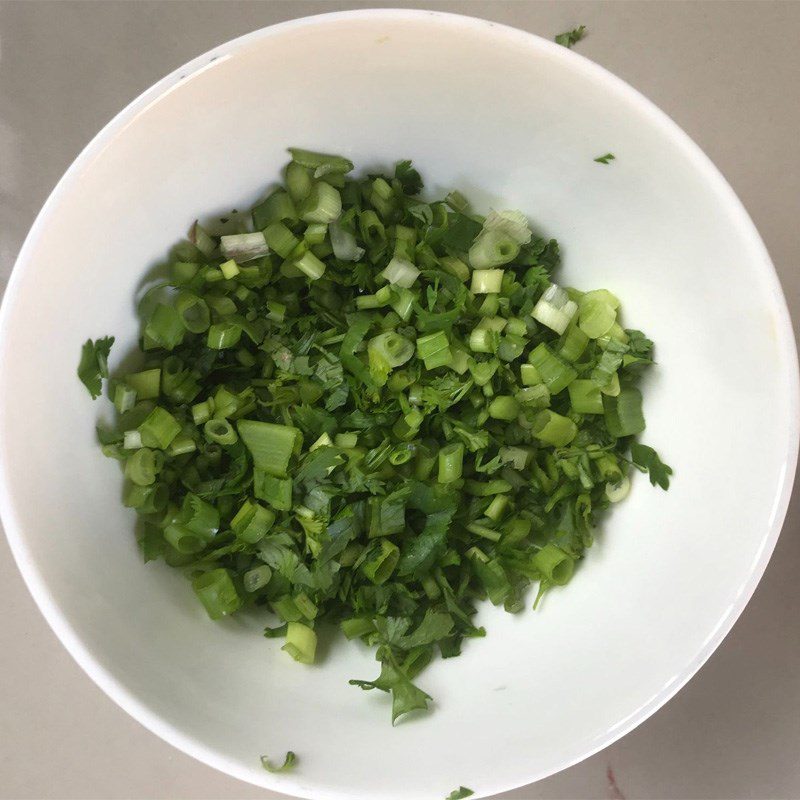
-
Prepare the seafood
Clean the mantis shrimp and crab, using a brush to scrub the shells, then rinse with water and let drain.
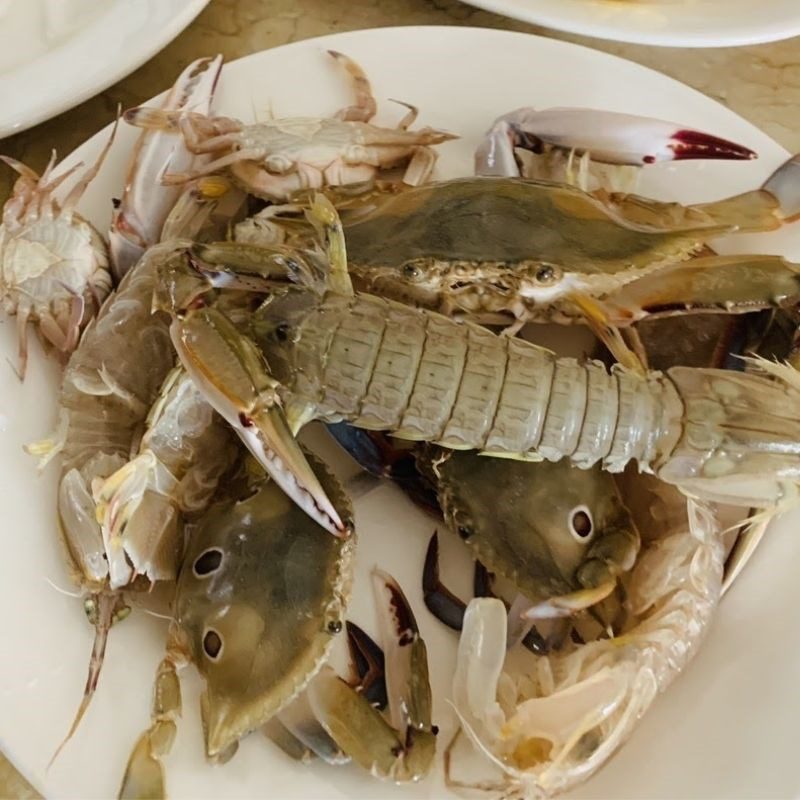
-
Fry the doughnuts
Fry the doughnuts with 1/2 cup (rice bowl) of cooking oil over medium heat for about 3 – 5 minutes until golden brown, then remove and place on paper towels to drain the oil.

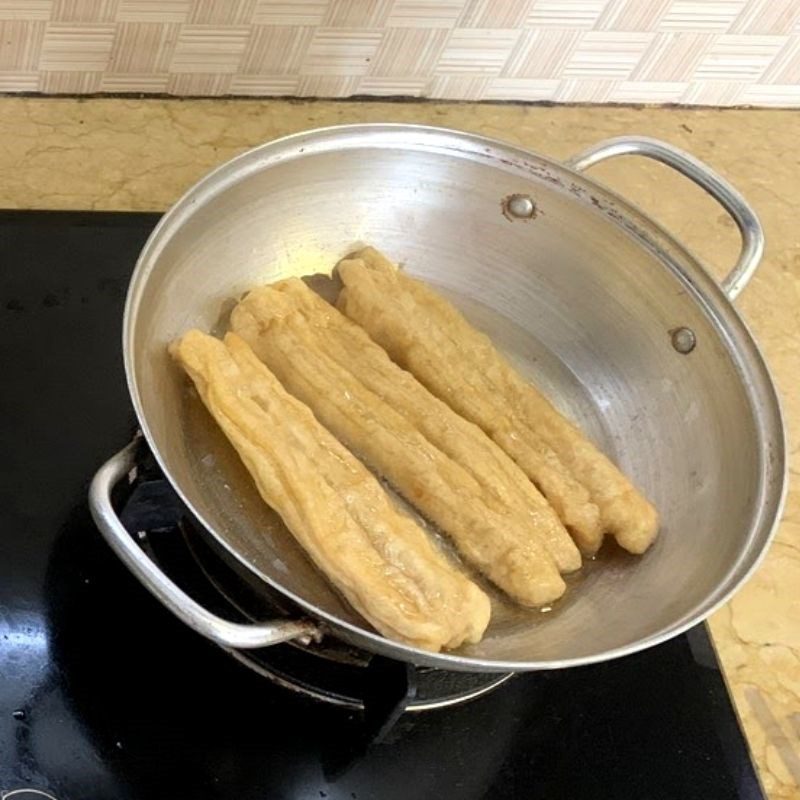
-
Cooking seafood noodle soup
Put a pot on the stove, add the prepared sweet corn and boil on high heat for about 7 – 9 minutes until the corn is cooked, then remove it. Keep the boiling water to use for cooking the noodle soup.
Pour the cooking oil used for frying the dough sticks out of the pan, leaving 2 tablespoons of cooking oil (reuse the oil from frying the dough sticks). Turn on the stove to heat the oil, then add the minced shallots and sauté until fragrant, then add the seafood, including mantis shrimp and crab, and stir briefly over medium heat.
Season the pan with 1 teaspoon of seasoning, 1 teaspoon of fish sauce, and 1 teaspoon of salt, then add the corn boiling water and bring to a boil.
Once the broth is boiling, add the prepared noodle strands. Boil until the crab and mantis shrimp are cooked, then transfer them to a plate first. Add 1/2 teaspoon of monosodium glutamate, adjust the seasoning to taste, then turn off the stove. Drop in the chopped green onions and coriander for fragrance and appealing color.
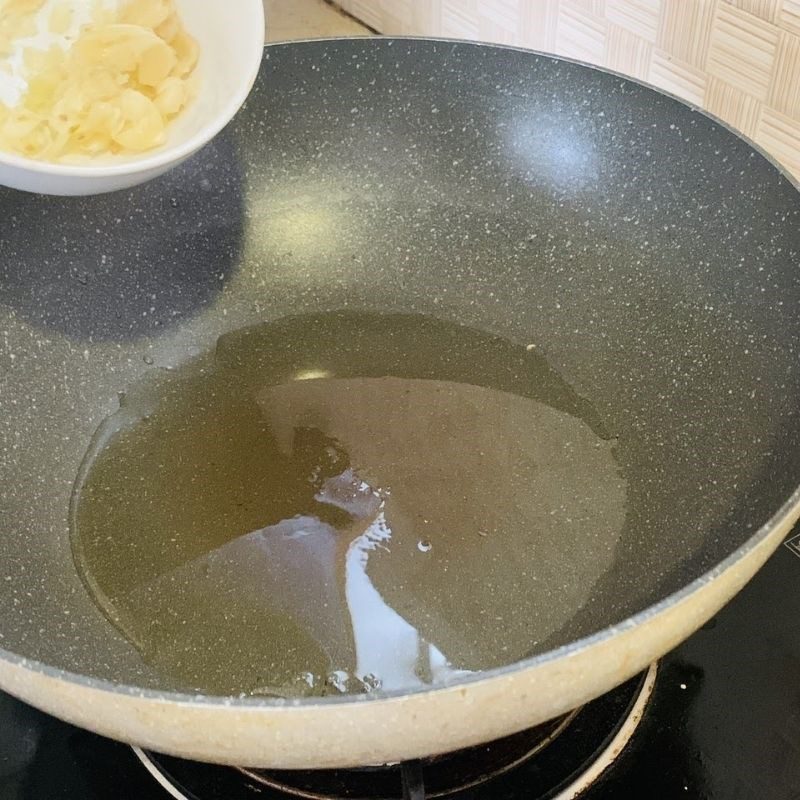
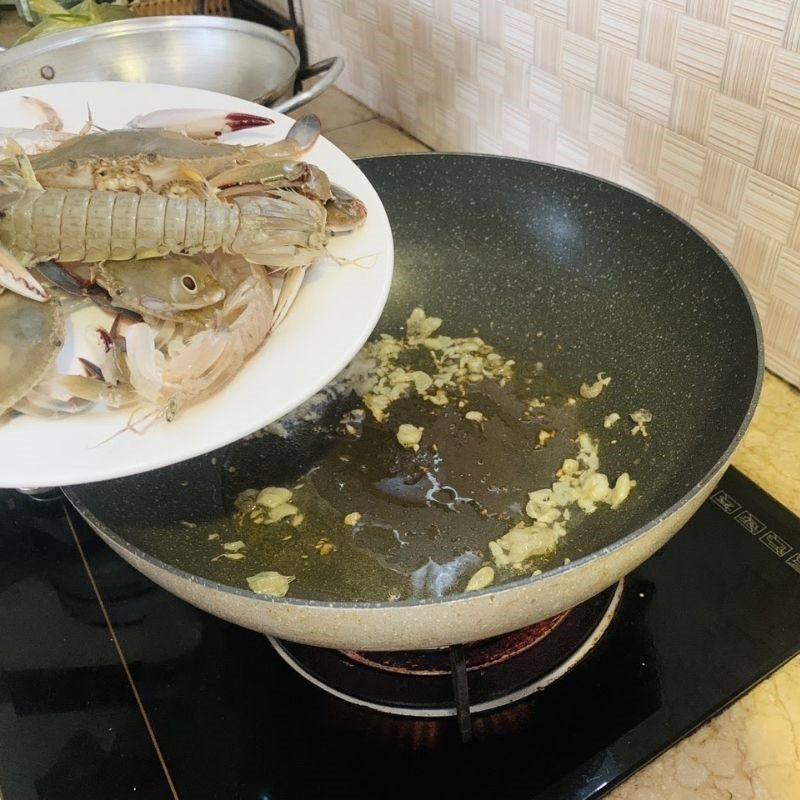
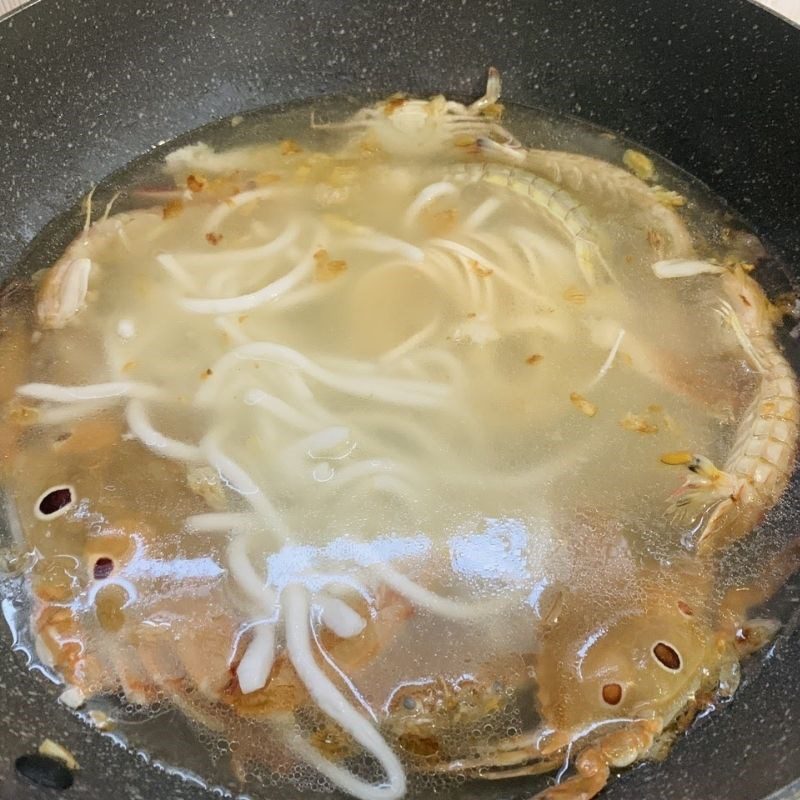
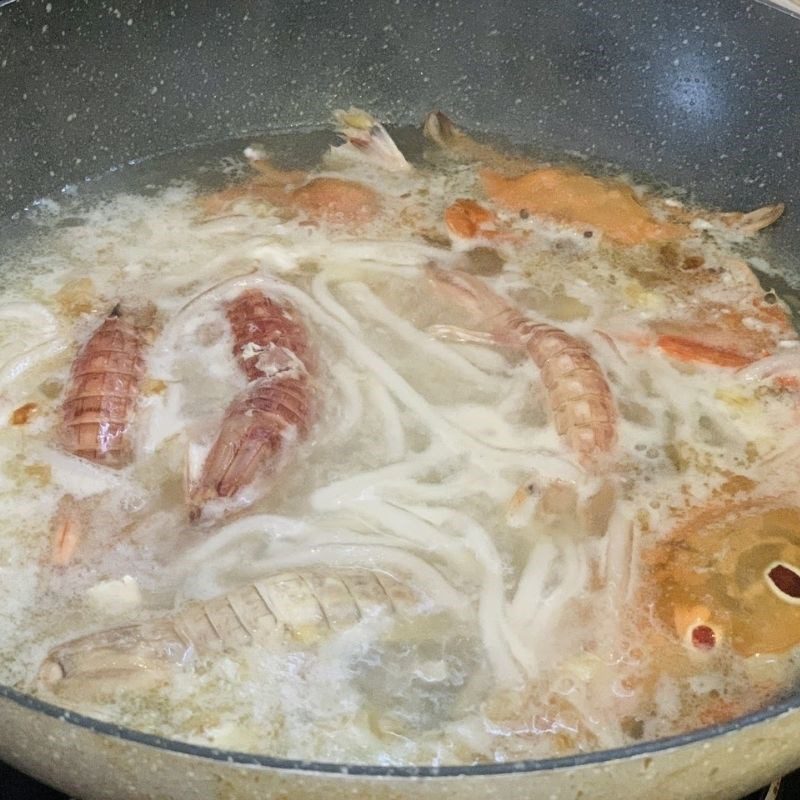
-
Final Product
Finally, you scoop the noodle soup into a bowl, add the toppings, and you can enjoy it. The noodles are chewy, the broth is rich and hot, combined with seafood, creating an extremely delicious flavor that stimulates the taste buds.
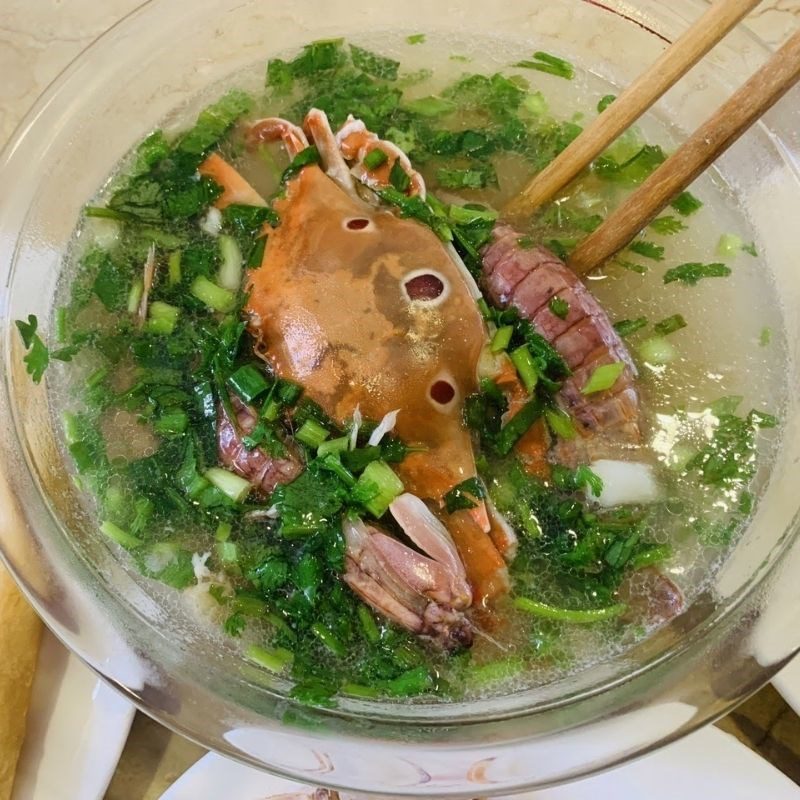
2. Seafood Noodle Soup

-
Preparation
30 minutes
-
Cooking
2 hours 30 minutes
-
Difficulty
Medium
Ingredients for Seafood Noodle Soup Serves 6
Korean udon noodles. 1 kg (or any noodles you like) Pork bones 900 gr Squid 1 piece Shrimp 500 gr Crab sticks 2 packets (about 450gr) Fish cake 2 pieces Dried shrimp 2 tablespoons Onion 1 bulb Leeks 4 stalks Red onion 3 bulbs Garlic 1 bulb Carrot 1 piece Ginger 1 piece Fresh coconut water 500 ml Cilantro/ herbs/ bean sprouts a little Common seasoning a little (sugar/ salt/ seasoning powder) White wine a little Cooking oil 8 tablespoons
How to choose fresh and delicious ingredients
How to choose fresh and sweet shrimp
- Fresh shrimp has a transparent outer shell, smells of salty seawater, and the tails are close together.
- Do not buy shrimp that feel slimy when touched, and whose bodies are curved instead of straight.
- Gently press your finger and move it on the shrimp shell; if it feels bumpy like sand in the shell, do not buy it.
- Absolutely do not buy shrimp with tails that are spread out, as this indicates shrimp that have been injected with chemicals or water to make them plump.
See details: How to choose fresh and delicious shrimp
How to choose fresh and delicious squid
- You can use any type of squid you like to cook this noodle dish, such as: giant squid, tube squid, baby squid,…
- Fresh squid will have clear eyes, a shiny body, the brown part will be dark brown, and the body will be opaque white.
- When touching the squid body, if the squid meat is firm, pressing on the body does not leave a dent and has high elasticity, then it is still fresh.
- Do not choose squid when observing that the eyes are cloudy, bulging out, yellowing, or leaking fluid.
- Absolutely do not choose squid with soft, mushy bodies, and where the head, tentacles, and arms easily separate from the body.
See details: How to choose fresh and delicious squid
What is crab stick? Where to buy it?
- Crab stick (Thanh cua) is a popular frozen processed food among food enthusiasts, also known as imitation crab meat or seafood sticks.
- Crab sticks are made from surimi – white fish meat finely ground and starch, then shaped to resemble the meat of snow crab legs or Japanese spider crab.
- You can find crab sticks at convenience stores, supermarkets, specialty stores that supply and distribute processed foods, or order through reputable e-commerce sites.
- When purchasing, you should choose products that are properly packaged, with clear origin, brand, and expiration date.
- Avoid buying crab sticks that are broken, slimy, or have unusual colors.
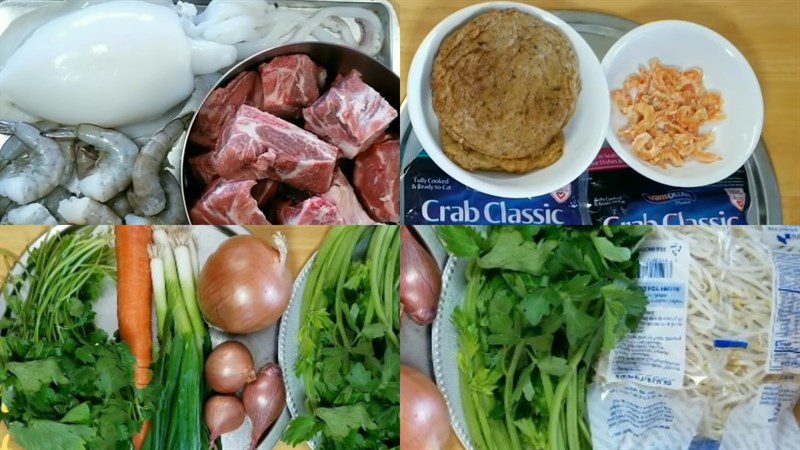
How to prepare Seafood Bánh Canh
-
Prepare the ingredients
For the pork bones, wash them thoroughly in cold water to remove the smell and let them drain. Bring a pot of water to a boil over high heat with a little salt; when the water boils vigorously, add the bones and blanch for about 5 minutes, until the water boils again and the meat of the bones firms up slightly, then remove the bones. Rinse the bones again with cold water until clean and let them drain.
Clean the squid, remove the odor with salt and white wine, then rinse it again with cold water and let it drain. Cut the squid into bite-sized pieces, using a knife to lightly score one side of the squid for aesthetic purposes.
For the shrimp, devein them, peel them leaving one segment of the shell at the tail, then wash the shrimp thoroughly and let them drain. The crab sticks and fish cakes are pre-processed; peel the crab sticks onto a plate along with the fish cakes sliced thinly.
Cut the onion at the root, peel, wash it clean, and then cut it in half. Peel the ginger, wash it, and slice it thinly. Rinse the dried shrimp, then soak them in a bowl of hot water for 15 minutes to soften.
Chop the garlic and shallots after cutting off the roots, peeling, washing, and mincing the garlic, while slicing the shallots thinly. Cut off the roots of the green onions, remove the wilted outer leaves, slice the green tops diagonally, and cut the green leaves into small pieces.
Pick off any wilted or damaged leaves from the cilantro and herbs, wash them along with the bean sprouts, then cut the cilantro and herbs into small pieces and place them in a bowl.
How to clean shrimp quickly and effectively
- Method 1: You can use a toothpick to poke horizontally through the shrimp’s body at the second segment from the tail and then pull the shrimp vein out.
- Method 2: A simpler way is to use a knife or scissors to cut along the shrimp’s body and then take the vein out, but doing so will not keep the shrimp whole.
How to clean squid properly without a fishy smell
- To clean squid properly, first remove the head, ink sac, and internal organs. If you accidentally break the ink sac, wash it thoroughly with water. Next, use a knife to cut off the squid’s eyes and the hard round mass in the center of the squid’s head (called the squid’s beak). You can either leave the squid’s skin on or remove it as you prefer. To remove the skin, lightly cut a line at the head of the squid’s body to create a ridge between the skin and the squid meat, then hold the meat with one hand while peeling off the skin with the other hand. Rinse the squid after cleaning several times to remove the slime and dirt.
- To eliminate the fishy smell of the squid, combine crushed ginger, 1 tablespoon of salt, and 1 tablespoon of white wine, then rub the squid with the mixture and rinse it with water.
- Additionally, to make the squid smell fresh, after cleaning it, marinate the squid with 2 teaspoons of sesame oil and a little bit of wine for 5 minutes, then rinse it lightly and proceed with cooking the squid.
See details: How to clean squid properly and eliminate the fishy smell

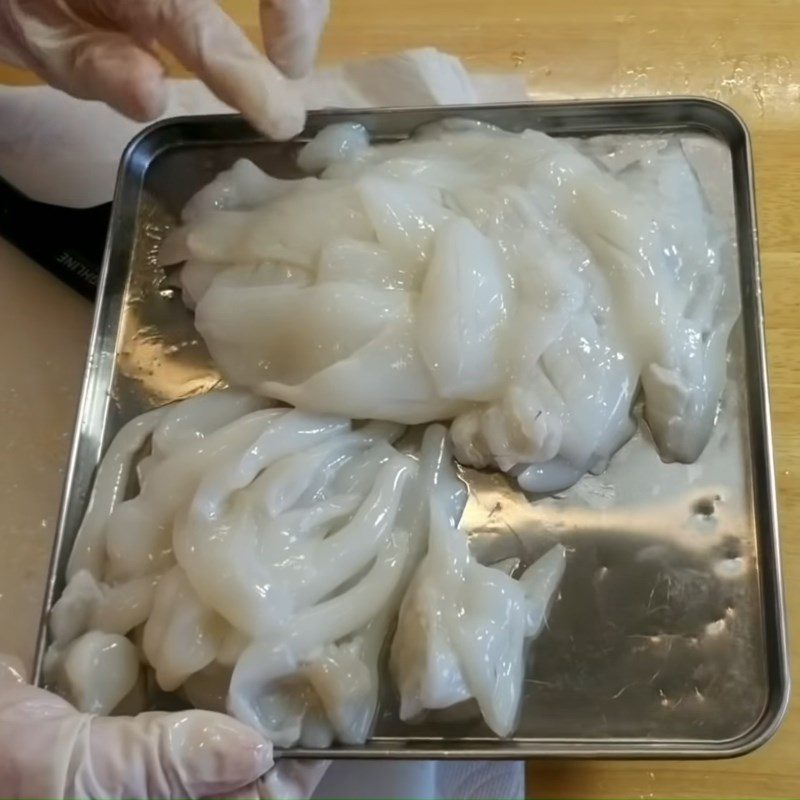

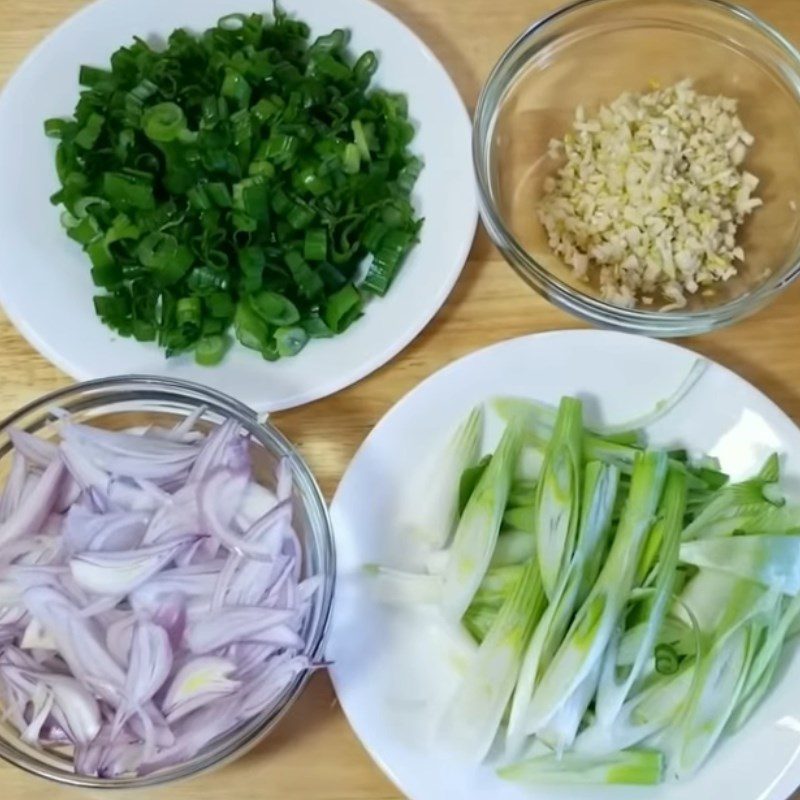
-
Boil shrimp and squid
Place a pot on high heat, bring 500ml of fresh coconut water to a boil along with a few slices of smashed ginger and a little salt. When the water is boiling vigorously, add the cleaned shrimp and blanch for about 2 minutes; when the shrimp is firm and turns orange, take the shrimp out and place them in an bowl of ice water, then remove immediately and drain.
Add the squid to the boiling coconut water, similarly blanch the squid for 2 minutes until it firms up; also take the squid out and place it in the ice water bowl, then remove to drain.
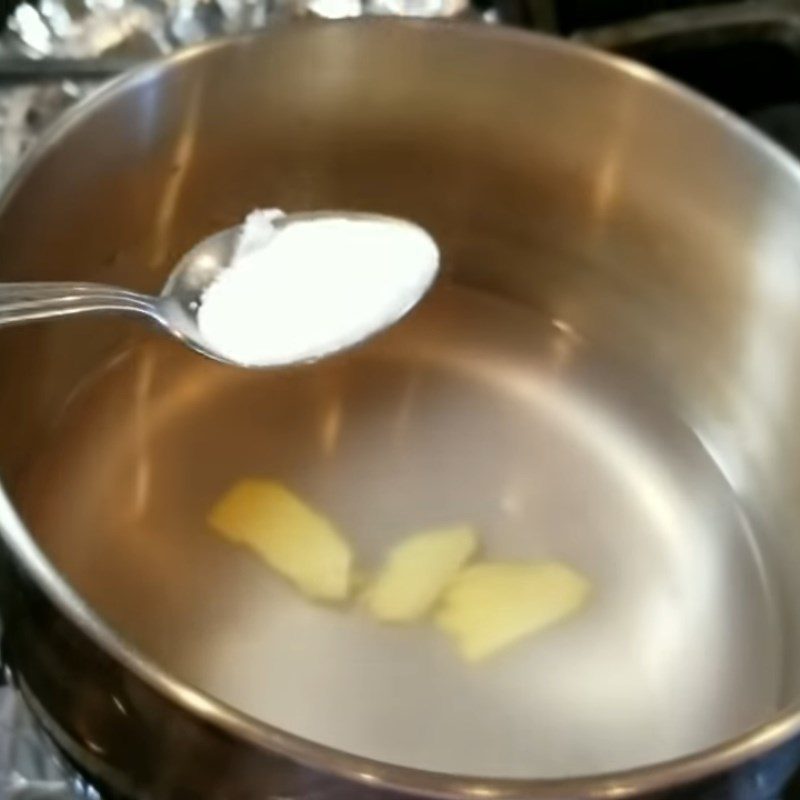
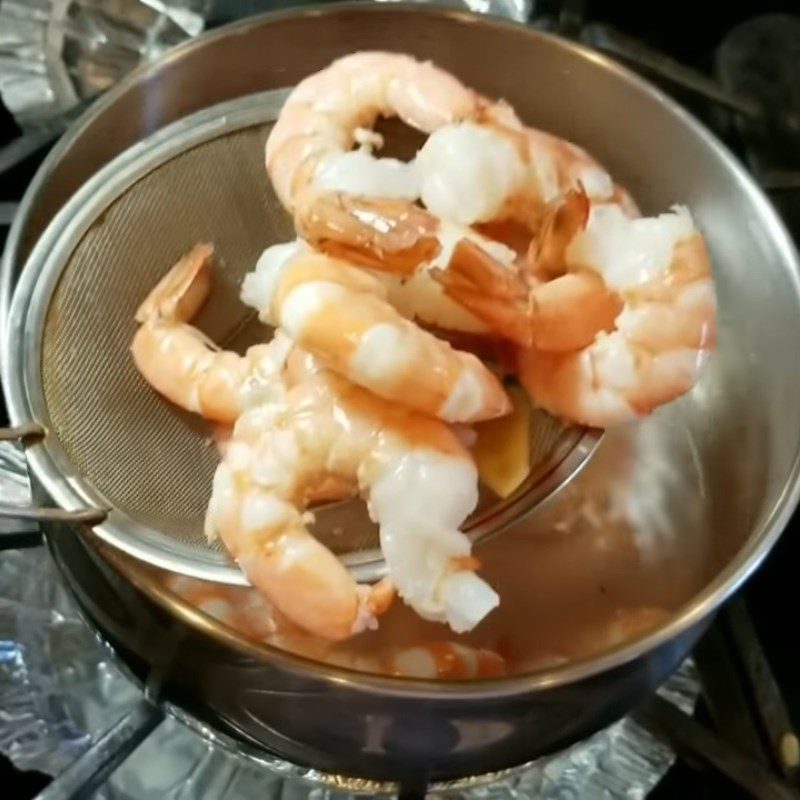
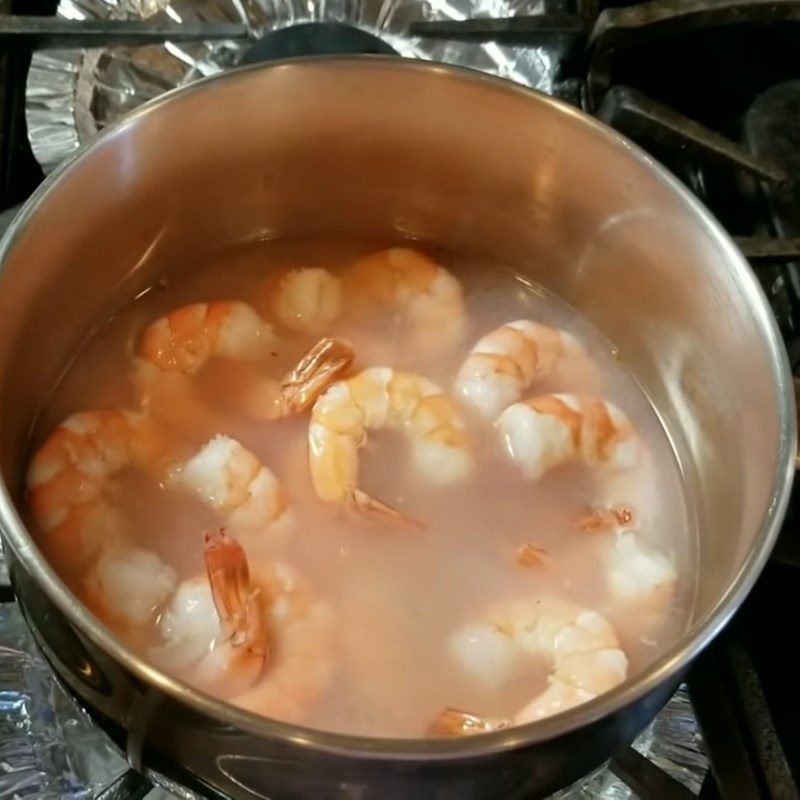
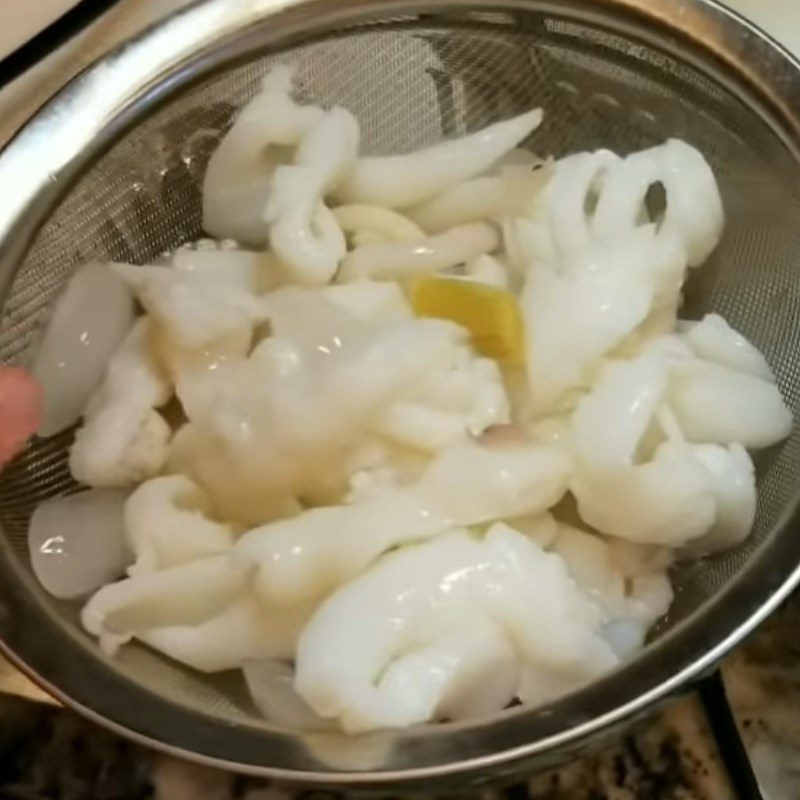
-
Sautéing garlic and blanching noodles
Place a pot of water on the stove over high heat, adding 2 tablespoons of cooking oil. When the water is boiling vigorously, add udon noodles or bánh canh and blanch until the water boils again for about 5 minutes, until the noodles are soft, then remove the noodles. Transfer the noodles to a basket and rinse with cold water, then drain.
Next, place a pan on the stove and heat 3 tablespoons of cooking oil over high heat. When the oil is gently bubbling and starting to bubble, add minced garlic and sauté until the garlic turns golden and fragrant, then pour the oil and garlic into a bowl.
Continue to place the pan back on the stove and heat another 3 tablespoons of cooking oil, sautéing sliced shallots and the green part of the onion. When the onions are crispy and slightly burnt at the edges, turn off the heat and remove the onions to a bowl to drain the oil.
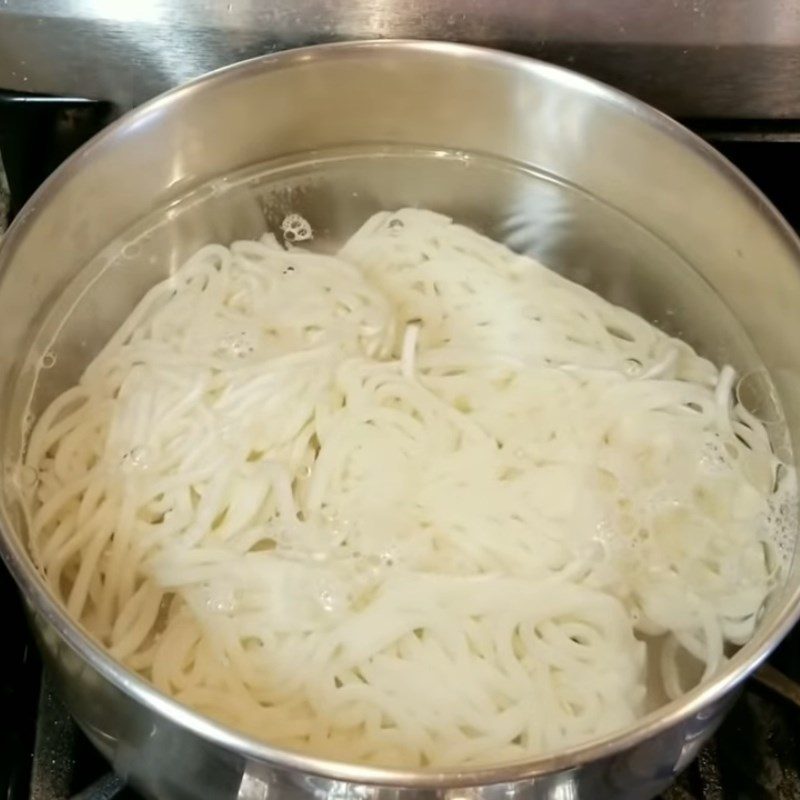
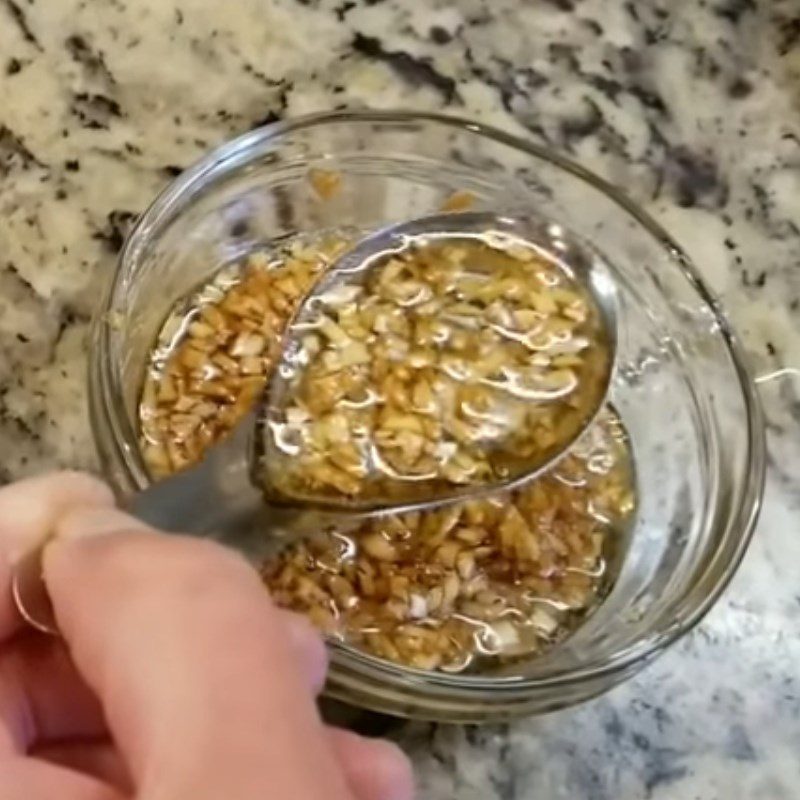
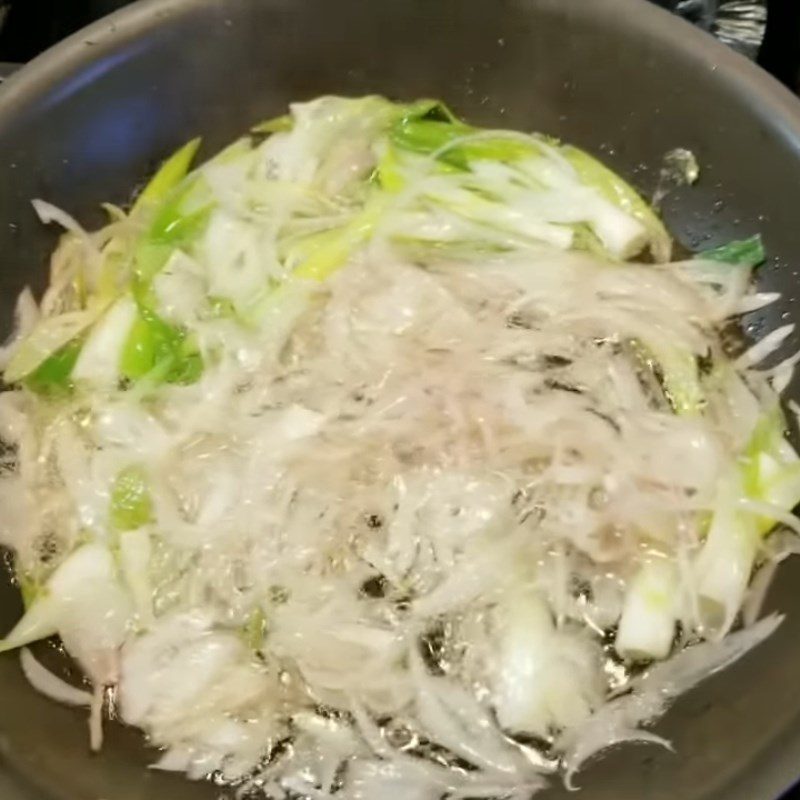
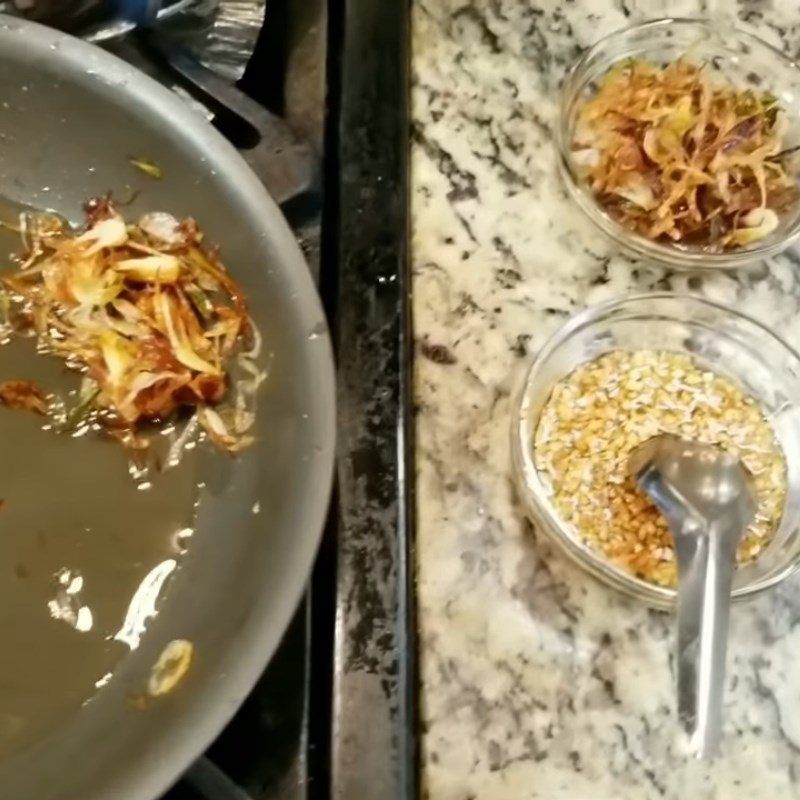
-
Cooking the broth
Place a 7-liter pot of water on the stove over high heat, add 1 halved onion and sliced ginger to the pot. Season the broth with 1 tablespoon of sugar and 1 tablespoon of salt.
Add the blanched and cleaned bones to the broth and bring to a boil. When the water is boiling and foam rises, use a ladle to skim off the foam to keep the broth clear. Add the soaked dried shrimp to the broth, reduce to medium heat, and leave the lid open, simmering the bones for about 2 hours.
After 2 hours of simmering, the bones will have released their sweetness. Season the broth with 1 teaspoon of sugar, 1 teaspoon of seasoning powder, and 1.5 teaspoons of salt, then add half of the fried onions to the pot. Stir well to mix the seasonings into the broth and taste to adjust the flavor to your liking.
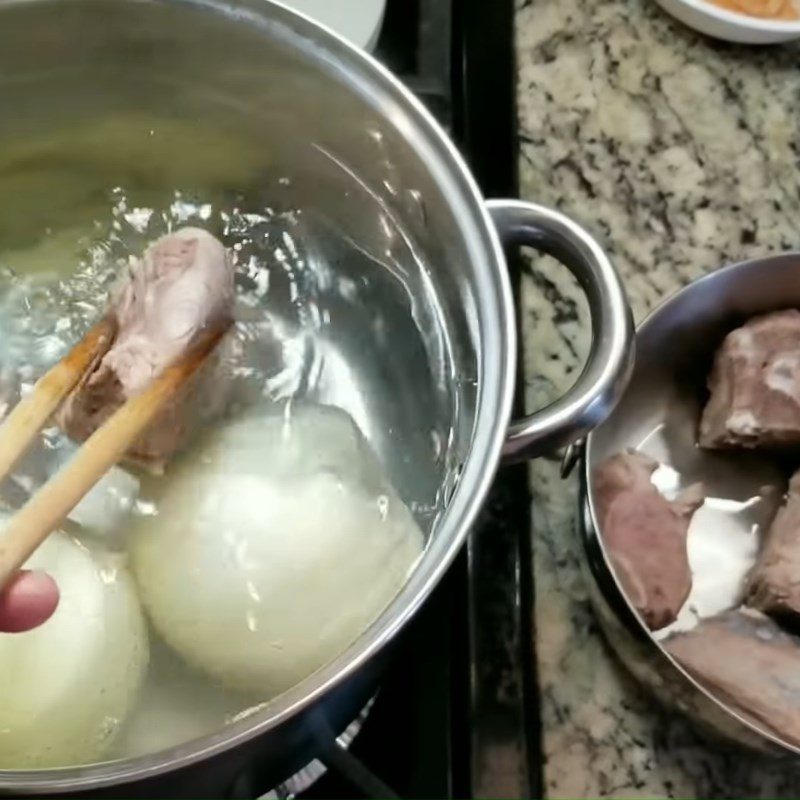
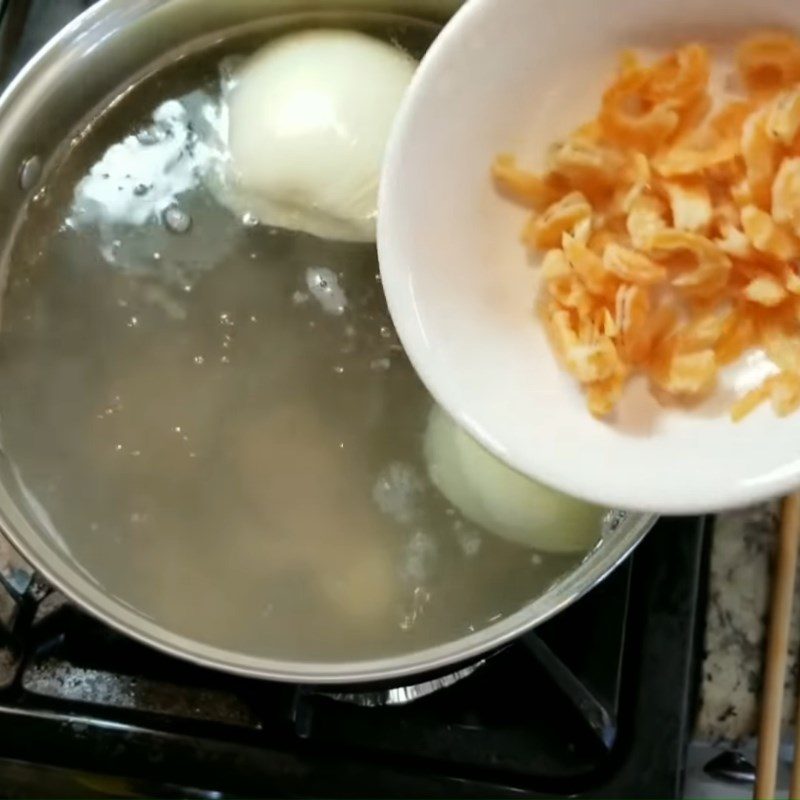

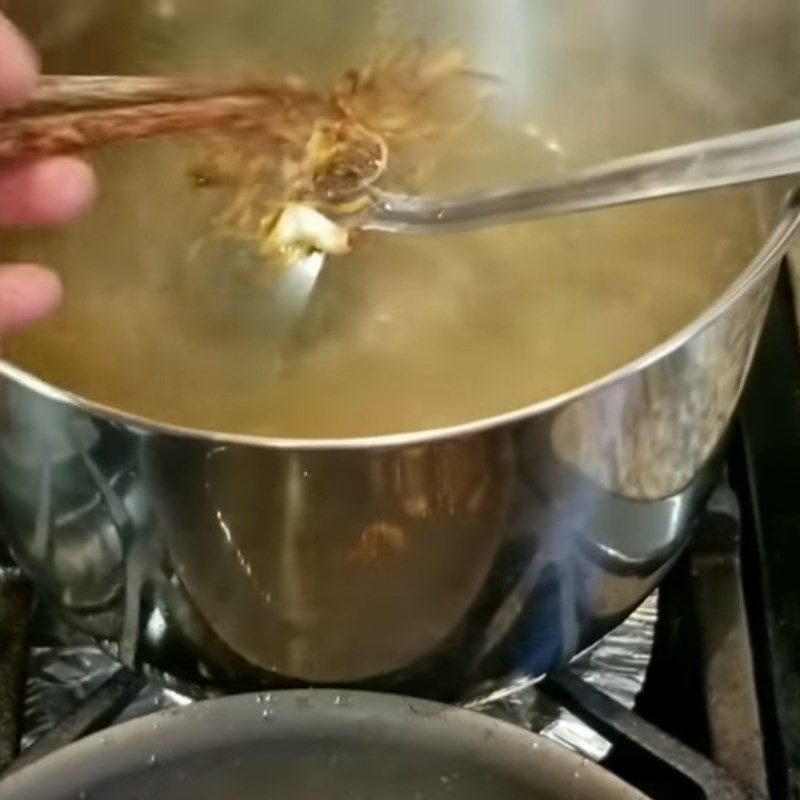
-
Finished Product
When eating, add a little fried garlic oil to mix well with the cooked, soft noodles, and serve the appropriate amount of noodles in a bowl. Add all the ingredients such as shrimp, squid, crab sticks, fish cake, and a little celery along with cilantro to the bowl.
Heat the broth and pour it directly into the bowl so that the heat cooks the celery and cilantro. Sprinkle a bit of crispy fried onion on top, and the bowl of seafood noodle soup is ready for you to enjoy.
The noodle soup is served with fresh crispy bean sprouts and dipped in salt and lemon pepper to stimulate the taste buds. The noodle strands are cooked just right, soft and chewy, making them appealing. The broth has a light sweetness from simmering pork bones, paired with firm, naturally sweet shrimp and squid, along with other complimentary dishes that create a blend of unforgettable flavors.
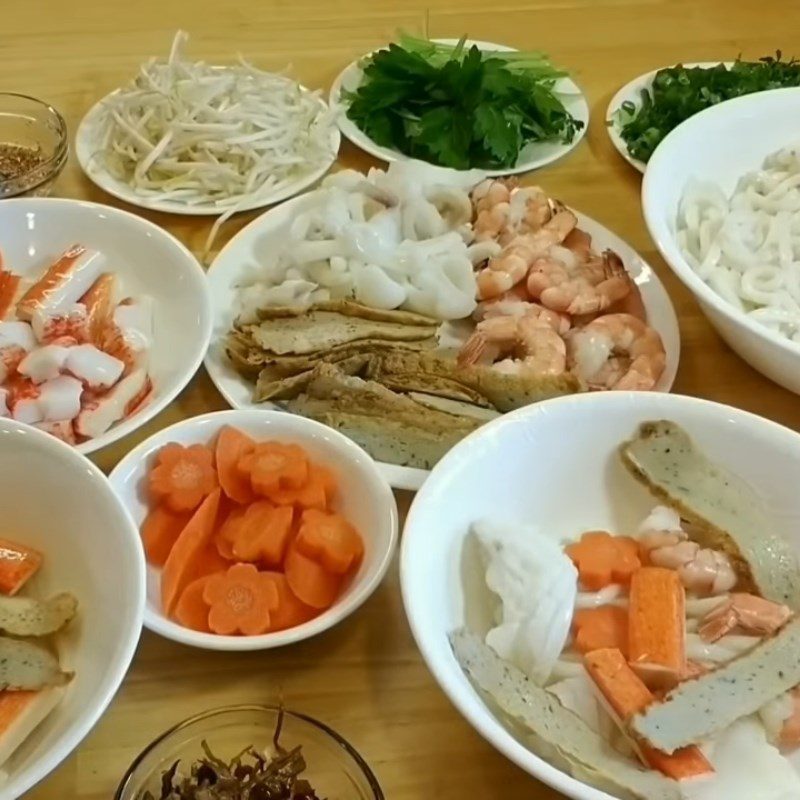
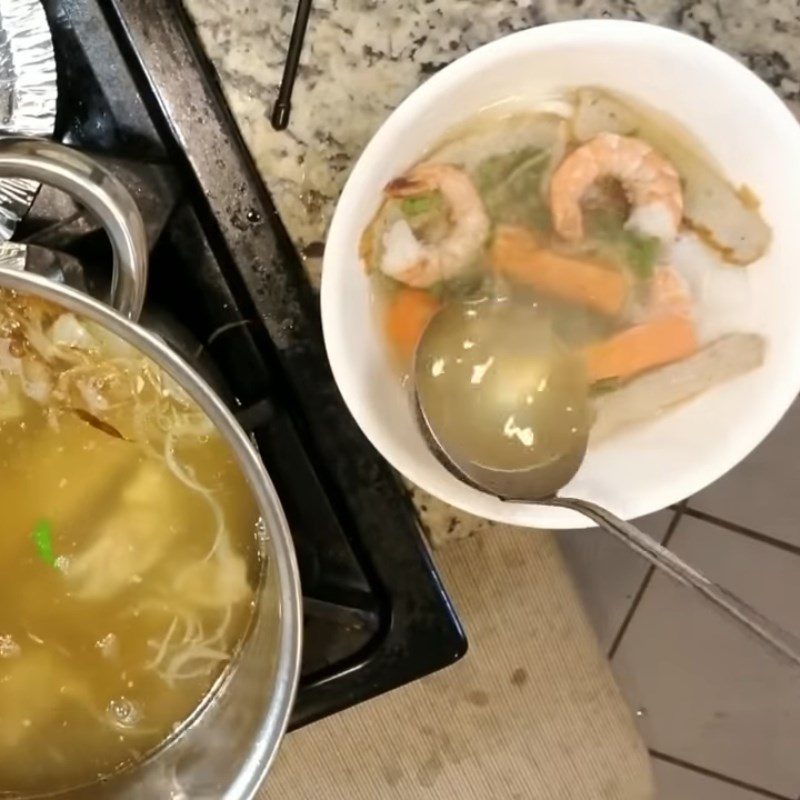

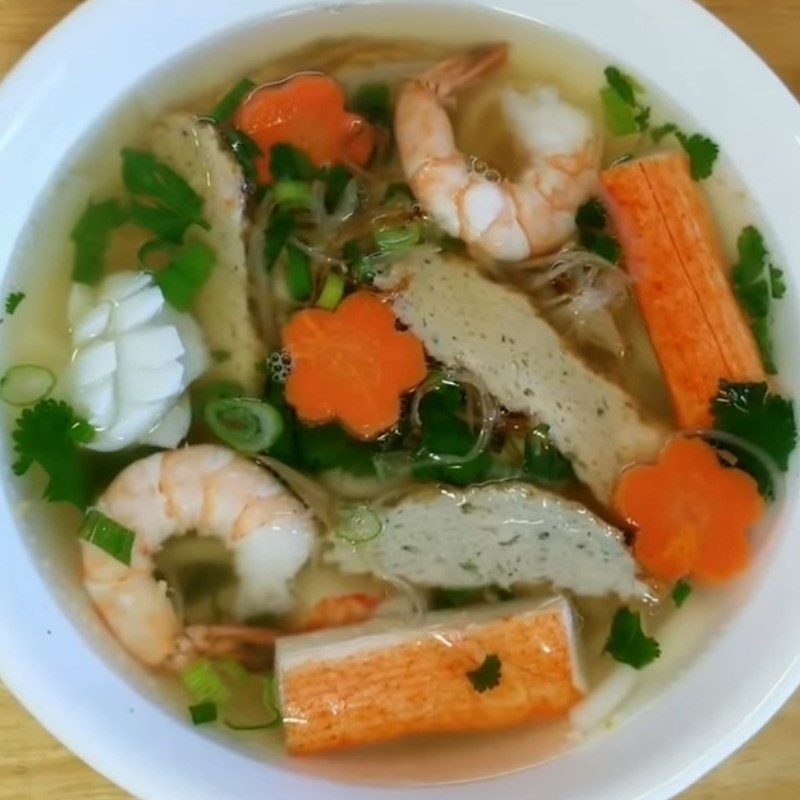
See more:
Above is the article guiding 2 ways to make the dish seafood noodle soup sweet and light, changing the taste for the family very simply and easily at home that anyone can do. Wish you success with this recipe!
